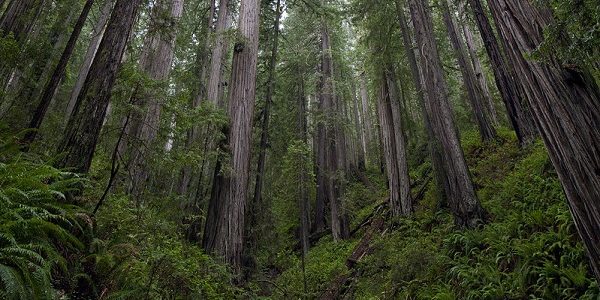Old Growth Forests

Old growth forests deserve protection
Why are old growth forests important?
Old growth forests play essential roles in wildlife habitat, species diversity, hydrological regimes, nutrient cycles, carbon storage, and numerous other ecological processes. They have unique structures and attributes that provide habitat for plant and animal species, such as lichen, bats, birds and mammals that are not found in other forest types. Old growth forests inspire a sense of awe, offer recreation, and have spiritual values.
These old forests are rare, and unfortunately becoming rarer every day due to natural disturbances like fire, human disturbance where old growth isn’t protected, and the warming and drying climate.
What are old growth forests?
There are many different definitions of old growth, in part because old growth looks different in ecosystems across the world where productivity, species, and disturbances drive differences in stand development. Most definitions focus on age and forest structures including large trees, signs of decay, multilayered canopies, canopy gaps, snags, and large downed logs. Tree size alone is not a marker of old growth. High productivity stands may have large, relatively young trees. Like all forests, old growth forests are affected by disturbances. Old growth forests are part of the ever-changing ecosystem and are the result of forest development.
Recognizing old growth
Most old growth in North America is protected in a park or reserve, but it is possible to encounter a forgotten patch of old growth while working or wandering in the woods. Tree size is likely to be the first indication of an old stand, but on dry or unproductive sites, other attributes might be more useful.
Old trees often have relatively open crowns, large diameter branches, flattened crowns, and raised crowns with few or no lower branches. Signs of tree age and decay are common in old growth stands such as large down logs, broken treetops, bayonet tops, cracks, scars, bark loss, hollow chambers, stem cavities, bark pockets, bark bowls, burls, resin flow, and bark bursts. Other elements of old growth include vertical diversification with shade tolerant species in the understory and horizontal variability due to canopy gaps.
Because old growth forests are rare, if you find an area that looks like it may be old growth, it is worth noting where it is and reaching out to local forestry agencies or universities to age the trees.
Current status and threats
Old growth forests face the same threats as other forests such as natural and human disturbances including fire, insects, diseases, storms, and conversion to other uses. In addition, old growth forests are particularly threatened by the warming and drying of recent decades. Because of these threats and the difficulty of replacing old growth forests, they are declining across the world.
Management response
In general, old growth should be excluded from management except where restoration of disturbance processes, like low severity fire, are crucial to maintain old growth conditions. Forest management can help younger forests move towards old growth characteristics. For example, retaining and protecting individual large, old trees and large downed logs helps a mature forest develop old growth characteristics. While not appropriate in all areas, management to foster old growth characteristics may help offset the global decline of old forests.
What is old growth?
Forests dominated by large, old trees, both live and dead, standing and fallen, that usually contain many other smaller trees.
Where: Old growth forests can occur anywhere, though usually they are found in areas protected from disturbance.
Importance:
- Biodiversity
- Wildlife habitat
- Carbon storage
- Hydrology
- Recreation, inspiration, awe, and spiritual values
Conservation status: Old growth forests are rare and in decline globally.
Old Growth Webinars
- Federal policy on mature and old growth forests
- Managing for Old-Growth Characteristics in Temperate Forests Globally
- Accelerating the development of structural complexity: case study Ellsworth Creek Preserve, WA
- Managing for the parts of the sum: restoration treatments to accelerate late successional structures
Stay Informed
about our recent projects and upcoming events.
